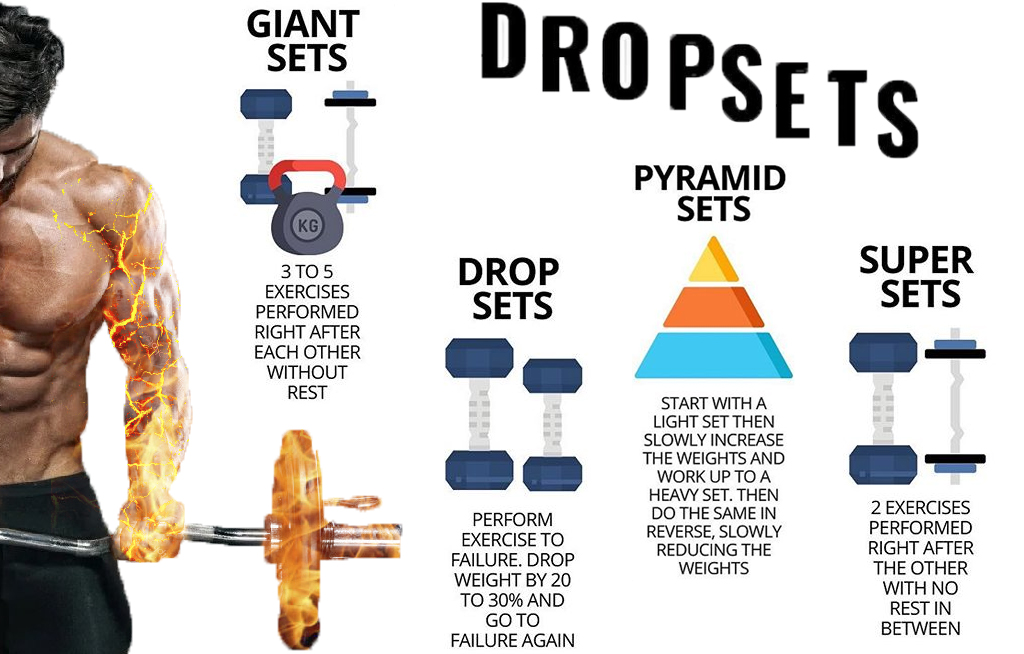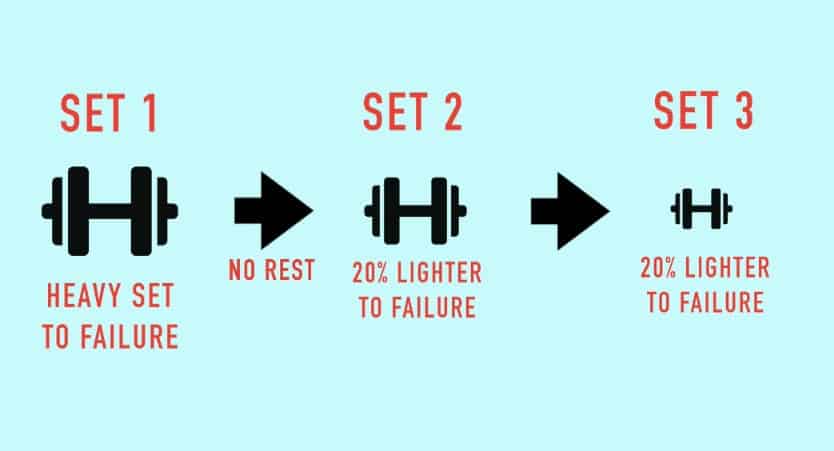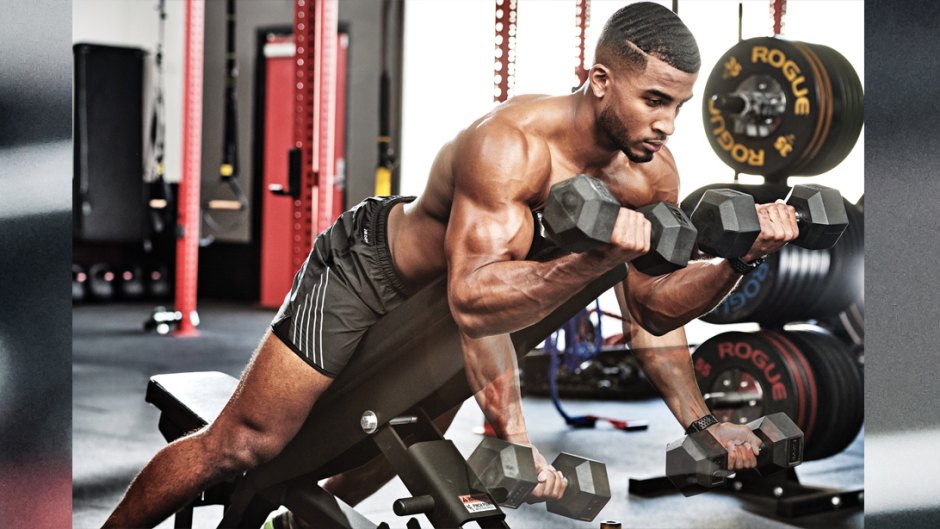Boost endurance, enhance fat loss and kick plateaus to the curb with these techniques for intensifying your resistance workouts.

If you’re looking to shake up your workout routine, there are three techniques you should consider adding to your repertoire: drop sets, supersets and giant sets.
These advanced techniques are used to boost the intensity of a workout, improve muscular endurance and shock your body to prevent a plateau. This kind of training also can enhance fat loss, and because they incorporate very little rest, you also get some cardiovascular benefits.
In addition, these techniques all force more blood into your muscles, which helps deliver nutrients and amino acids to the tissues and accelerates the repair process. These techniques can be intense, so use them sparingly — overuse can lead to overtraining. We’ll dive into each one and share their individual benefits, examples and training tips to keep in mind.
What Is a Drop Set?

A drop set is basically an extended set of a move, usually performed as the last set of that exercise as a burnout. For example, for a seated dumbbell shoulder press, you’d do two sets of 10 to 12 reps using a certain weight. For your third set, you’d begin with the same weight and do as many reps as you can, then “drop” or reduce the weight and go to failure, and then drop the weight once more and rep out until you can’t lift the weight anymore.
What Are the Benefits of a Drop Set?
“Drop sets are effective for increasing volume of training while still maintaining good technique for the purpose of muscle growth and fat loss,” “For example, there are certain exercises that are just better than others. Squats vs. leg extensions, for instance. It’s probably better to just add drop sets of squats than to add leg extensions but not do all the squats you can handle. Same thing for bench press vs. bench flye.”
Can You Do Drop Sets at Every Workout?
The short answer is yes — but you probably don’t need to. If you’re only training a few times a week with weights, you can do drop sets every time you train since maximizing volume of the important movements is critical in low-frequency training.
However, if you lift most days of the week, you’ll want to avoid drop sets on your lighter days. “It’s better to focus on recovery and reserve loads of drop sets for more challenging training days,”. “If you’re going to do drop sets on light days, they should probably be done as a replacement for a working set to reduce volume and training stimulus further rather than to add to the overall volume.”
How to Do a Drop Set
You can do anywhere from one drop set to as many drop sets as you did working sets — it just depends on how much volume of training you’re trying to push with that one exercise. “For a big compound movement of high value in training — such as squats, deadlifts, bench, lat pulls, or pull-ups — it might be worth doing more than one drop set, if you deem that lift to be a primary focus for the day,” .
If your goal is to maximize muscle growth and fat-loss stimulus, then decrease weight by 8 to 15 percent and continue to match reps from the previous heavier sets or even increase reps by a modest amount per set.
If you’re a newer lifter and your goal is to increase muscular power or provide more opportunity for learning a newer movement at a less challenging weight, then advises a bigger decrease in weight from the working weight. “Decreasing weight by 20 to 40 percent is great,” . “Complete the same number of reps but probably not more than what was being completed in the working sets at the higher weight.”
What Is a Superset?

A superset is a combination of two or three moves that either work the same bodypart or opposing muscle groups — the key is that the exercises are done back-to-back with no rest in between. Examples of typical supersets include a seated row with a push-up for back and chest and an overhead press with a seated lateral raise for shoulders. Between supersets, you rest only long enough to recover and catch your breath, then hit it again. This helps you save time, burn fat and spike your metabolism.
What Are Supersets Good For?
Supersets serve two primary purposes. “First, they’re often used to drag a smaller muscle group into more fatigue and muscle damage under the assistance of a larger muscle group,” . “It’s a great way to stimulate hypertrophy of muscles that reach failure quickly in isolation movements and to work them over a broad range of motion and varying angles.”
Second, they’re great for anyone who is crunched for time, because while local fatigue is present in one muscle group, another muscle group (usually the opposing group, such as biceps and triceps) can get some work in. So think of supersets as a way to cut total rest time in the gym in half.
On the flip side, if maximizing strength is your goal, longer rest periods and more recovery for local muscle groups may be the better approach.
How to Do a Superset
If you’re looking to drag smaller muscle groups to fatigue, 10 to 15 is a great target for each exercise within a superset. “If you’re doing it because you’re short on time, this technique could be used for any set-times-rep scheme in the gym — from sets of three up to 15 reps per set,” he says. “Going much higher than 15 per set might put too much of a load on cardiovascular demand for it to truly be timesaving overall.”
A good example of a superset is skullcrushers: Try 10 reps (or to roughly two to three reps from failure), and then without taking any break, transition into a close-grip bench press with the same weight until two to three reps from failure.
What Is a Giant Set?
A giant set is a circuit of three or more moves for one bodypart performed one after another with little to no rest in between. For example, you might do an overhead press, a lateral raise, a rear-delt raise and an upright row for shoulders — then rest a few minutes to catch your breath and repeat.
What Are the Benefits of a Giant Set?
Giant sets increase the intensity of a workout by overloading a muscle group and pushing it to its limit to burn fat and boost the cardiorespiratory response.
“Giant sets are only minimally more effective than supersets,” he explains, adding they are probably better reserved for the most demanding sessions for more advanced trainees who are seeking absolute maximization of hypertrophy stimulus. “Giant sets offer the same benefits as supersets if done correctly, but there are more ways to get giant sets wrong and compromise the effectiveness of training — essentially, just turning training into cardio and circuit training rather than either more effective hypertrophy training or more time-efficient strength and hypertrophy training.”
Doesn’t recommend giant sets during any phase of strength training because they are really only good for hypertrophy training (since the loading intensity can’t be high enough for the third exercise to provide any strength benefit to anyone but the most novice of exercisers). “And novice exercisers don’t need to be doing giant sets because they’ll benefit from honing the techniques of movements under less fatigued states, and they respond beautifully to simpler, more conventional models of training,” he argues.
How to Do a Giant Set
A giant set is typically three or more exercises in a sequence. “But I would recommend against doing more than three,” he says. “First because the timesaving benefit of doing so is limited — due to setup and tear-down inefficiency — but more importantly because it doesn’t add much benefit to one’s training, other than cardio fitness, to do more than three in a row.”
For example, for someone looking for glute growth, chest-elevated glute bridges, followed by barbell walking or reverse lunges, followed by conventional or stiff-legged deadlifts would hammer the glutes first with an isolation movement as a pre-fatigue exercise and then continue to use them with the assistance of quads, hamstrings and lower back, which would be less fatigued overall.
Sets of 10-plus reps for each exercise would be ideal. “Cardio demand here is going to be big, so don’t expect to do more than three of these giant sets in a single session,” .


